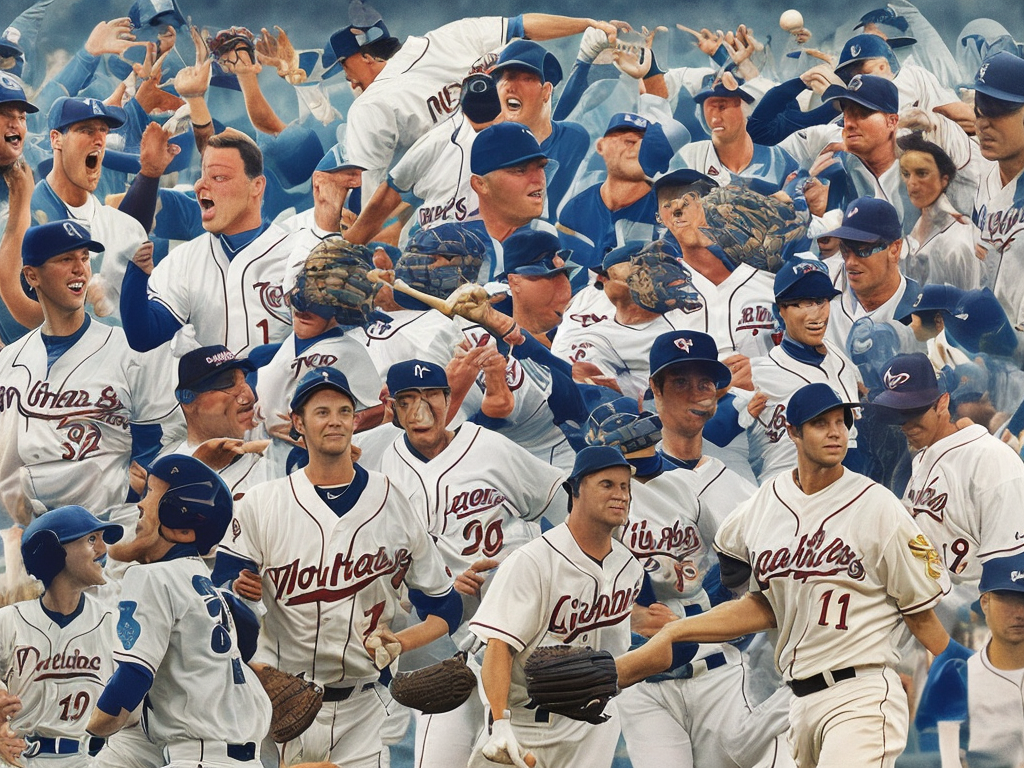
Baseball is a sport that has captivated millions of fans around the world for over a century. With its roots dating back to the mid-19th century, this sport has seen many memorable moments that have etched themselves into the annals of sporting history. In the world of baseball, two particular achievements stand out as the pinnacle of pitching excellence: the no-hitter and the perfect game. While both these terms relate to an exceptional performance by a pitcher, there are crucial differences between the two. In this article, we will delve into the unique characteristics of each feat and explore why they are held in such high regard.
To truly appreciate the difference between a no-hitter and a perfect game, it is essential to understand the basic idea behind each of these monumental achievements. A no-hitter refers to a game in which a pitcher successfully prevents the opposing team from recording a single hit throughout the course of the game. This means that over the span of nine innings (or longer, in the case of extra innings), the pitcher and their teammates have not allowed the opposing team to make contact with the ball in a way that would result in a hit. On the other hand, a perfect game takes the concept of a no-hitter one step further. In a perfect game, not only is the opposing team kept hitless, but the pitcher also manages to retire all 27 batters they face without a single one reaching base.
The rarity of these achievements can be understood by looking at the historical data. Since the formation of Major League Baseball in 1876, there have been a total of 305 no-hitters, while perfect games number just 23. These numbers alone serve as a testament to the extraordinary level of skill and precision required to accomplish these feats. However, to truly grasp the difference between a no-hitter and a perfect game, it is crucial to examine the specific elements that distinguish them.
One of the key factors in understanding the distinction between a no-hitter and a perfect game lies in the term "base runner." In a no-hitter, while the pitcher manages to prevent the opposing team from recording a hit, it does not necessarily mean that no runners reach base. In such a case, the pitcher may issue a walk (allowing the batter to reach first base) or hit a batter with a pitch, resulting in a baserunner. Furthermore, an error committed by a fielder can also enable a runner to reach base, negating the possibility of a perfect game. Thus, while the pitcher may have an exceptional performance in a no-hitter, there can still be instances where runners manage to reach base.
On the other hand, in a perfect game, there is an unwavering requirement for the pitcher to retire all 27 batters they face without any reaching base for any reason, be it through a hit, walk, hit by pitch, or an error. This makes the perfect game a rare and remarkable achievement that represents an unparalleled level of pitching mastery. It showcases the ability of a pitcher to consistently execute their pitches and keep the opposing team from having even the slightest chance of reaching base.
Another crucial aspect to consider when examining the difference between a no-hitter and a perfect game is the margin for error. In a no-hitter, while the pitcher is undoubtedly pitching at an exceptionally high level, they are allowed some amount of leeway in terms of pitch location and overall performance. For instance, a pitcher may surrender a few walks or hit batters to prolong the no-hit bid, but as long as the opposing team is unable to record a hit, the no-hitter is still intact. Moreover, even if a batter reaches base on an error committed by the fielders, the no-hitter is still recognized as long as no hits are allowed. Therefore, in a no-hitter, the pitcher can experience small setbacks without completely compromising their chances of achieving this milestone.
However, in a perfect game, any hiccup, regardless of how minor it may seem, jeopardizes the entire achievement. The pitcher must demonstrate absolute precision and control for all 27 batters faced. This level of performance demands a pitcher to be at their absolute best for the entire game. Even a single hit, walk, hit by pitch, or error nullifies the chance of a perfect game. Consequently, the requirements for a perfect game are significantly more stringent than those for a no-hitter, resulting in an achievement that is even more uncommon and awe-inspiring.
While a no-hitter and perfect game both represent extraordinary feats of pitching, there are inherent differences that set them apart. The level of pitching prowess required in a perfect game is higher due to the strict criteria that must be met, namely retiring all 27 batters faced without any reaching base. On the other hand, a no-hitter, while still a phenomenal achievement, allows for the possibility of walks, hit batters, or errors. These discrepancies play a significant role in highlighting the rarity and reverence associated with a perfect game.
In conclusion, the difference between a no-hitter and a perfect game extends beyond mere terminology. These two iconic achievements in the world of baseball demonstrate the pinnacle of pitching excellence. While a no-hitter represents an exceptional display of skill in preventing the opposing team from recording a hit, a perfect game reaches an even higher level of achievement, demanding that the pitcher retire all 27 batters faced without a single one reaching base. The rarity of these accomplishments, as exemplified by the historical data, further emphasizes their significance. Whether it be the thrill of witnessing a pitcher's dominance or the sheer improbability of the task, both a no-hitter and perfect game serve as enduring testaments to the greatness of the sport and the human ability to achieve the seemingly impossible.
 Self-Instruct
Self-Instruct